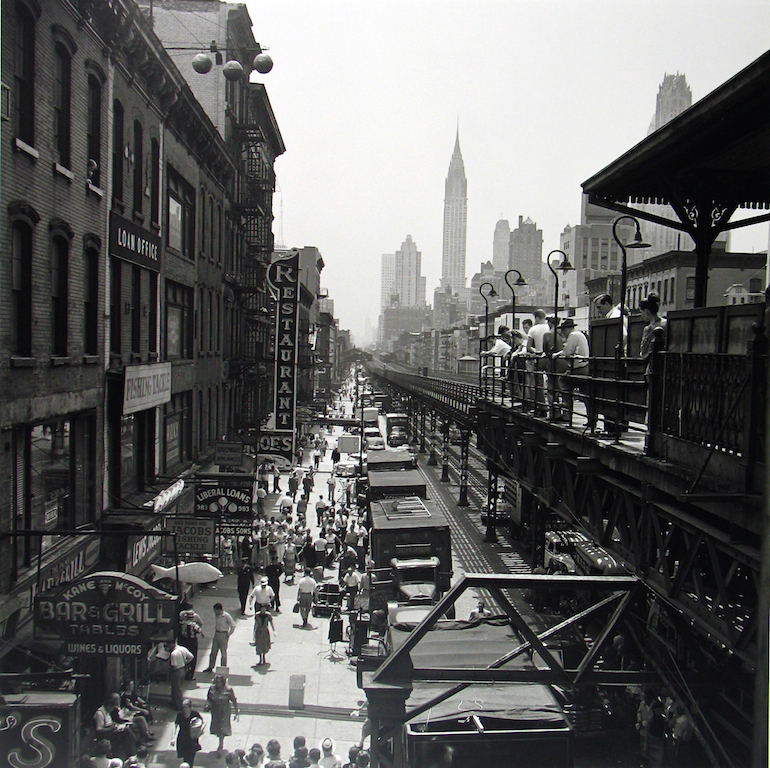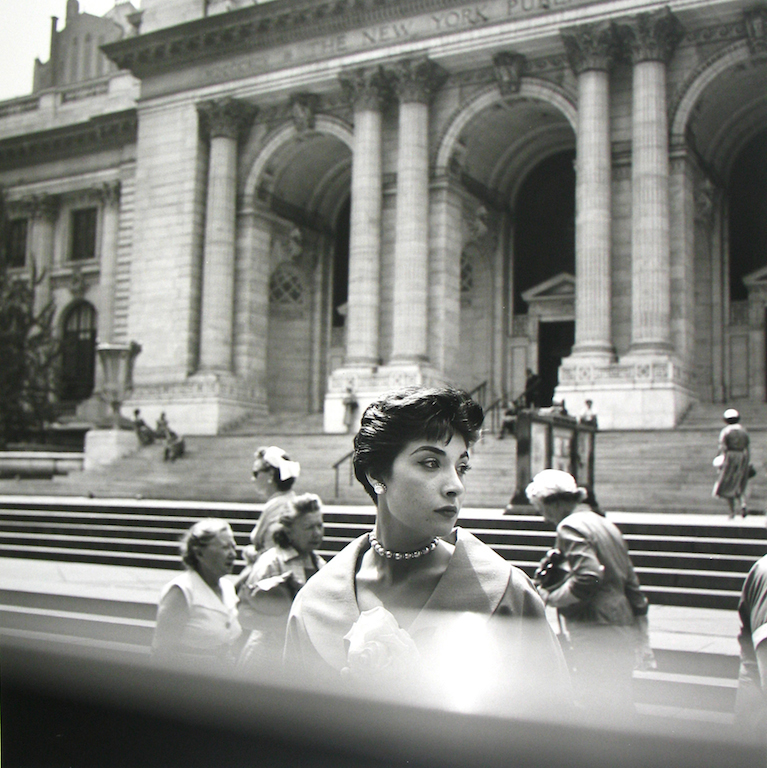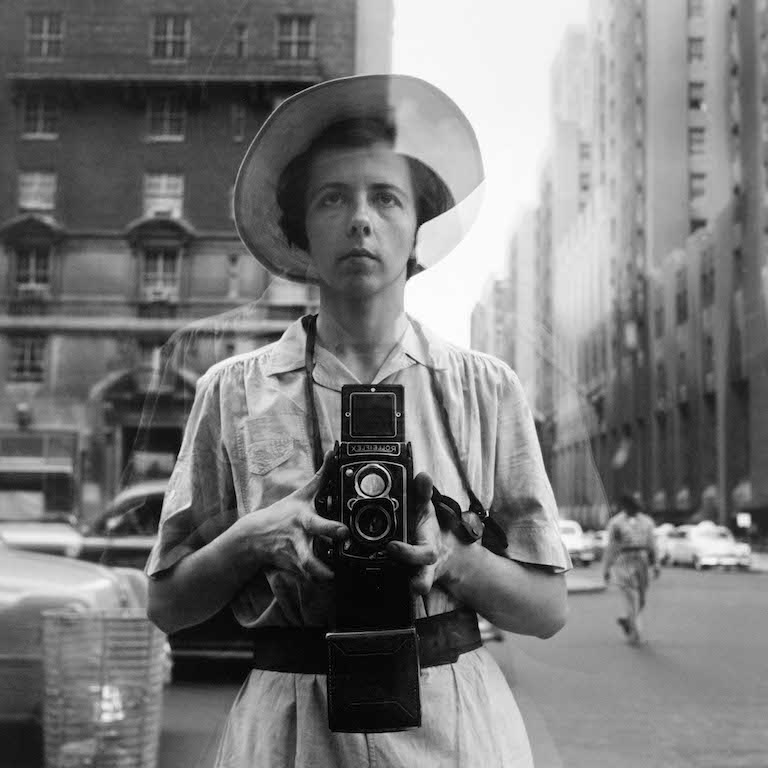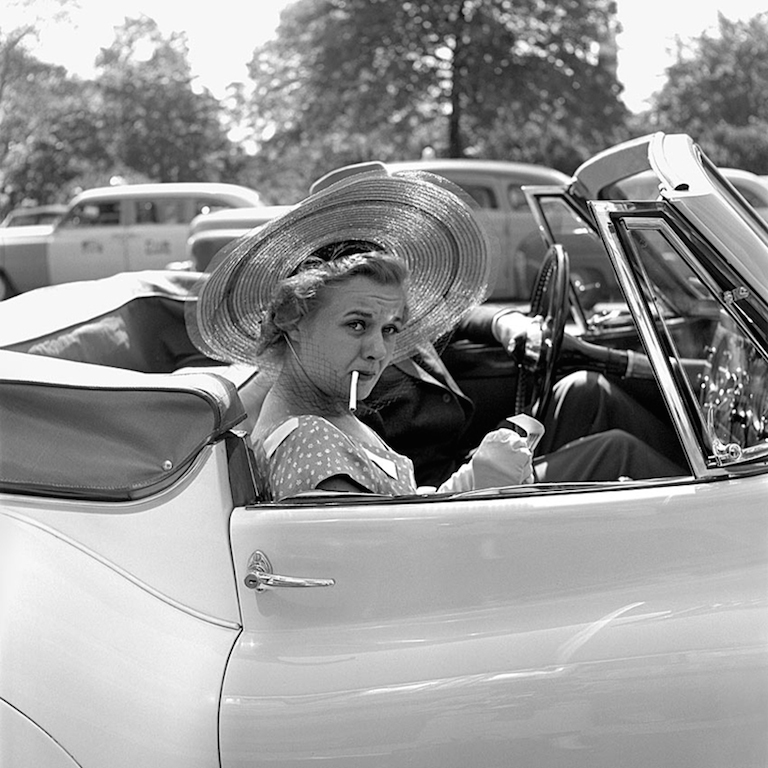AMSTERDAM. Passerete le feste ad Amsterdam? Un week-end veloce? E allora la mostra dedicata a Vivian Maier al Foam è una tappa imperdibile (aperta fino al 1° febbraio 2015). Una retrospettiva dedicata ad una fotografa eccezionale il cui lavoro è stato scoperto soli pochi anni prima della sua morte.

Vivian Maier (New York, 1926-2009) ha lavorato come bambinaia professionista per tutta la vita e nel suo tempo libero ha documentato la vita nelle grandi città americane come New York e Chicago. Ha composto un corpo imponente di lavoro, composto da 100.000 negativi e pur non avendo fatto della fotografia la sua professione, la qualità dei suoi scatti può essere paragonata a quella dei contemporanei famosi come Joel Sternfeld, Joel Meyerowitz, Elliot Erwitt e Garry Winogrand.
Vivian, nata negli Stati Uniti da madre francese e padre austriaco, aveva una natura solitaria. Ha perso entrambi i suoi genitori nella fase iniziale, quindi è stata costretta a diventare indipendente in giovane età. Nel 1951 divenne una bambinaia, il lavoro che ha continuato a fare per il resto della sua vita. Chi l’ha conosciuta dice che era estremamente intelligente, eccentrica, curiosa e uno spirito libero. Vivian ha documentato tutto ciò che attirava la sua attenzione, in foto così in video. Vestiva abbastanza appariscente: indossava un cappello, un abito lungo, un cappotto di lana e scarpe da uomo, e non ha mai lasciato la casa senza una macchina fotografica al collo.

Lei è rimasta sola per tutta la vita e non aveva figli suoi, ma ha curato i bambini di cui si occupava come se fossero suoi. A Chicago, nel 1956, in una casa in cui lavorò da bambinaia, la Maier fece di un bagno la sua prima camera oscura e il suo lavoro fotografico, in un primo momento era prevalentemente in bianco e nero ed incentrato su temi sociali: la vita di strada, le persone svantaggiate e migranti. Cresciuti i bambini nel 1970 Vivian è stata costretta a cercare lavoro con altre famiglie ma non fu più in grado di sviluppare le proprie pellicole visto che le nuove famiglie non avevano una stanza da destinare a camera oscura. Il lavoro si accumulò e durante questo periodo la Maier ha sperimentato la pellicola a colori.
Nel 1980 i problemi finanziari e la mancanza di un indirizzo fisso hanno causato diversi problemi alla sua passione e alla fine del 1990, la Maier lasciò la sua macchina fotografica in pegno. I bambini di Glensburg le fecero un piccolo studio che evitò alla Maier di finire sotto un ponte. L’archivio fotografico è stato accantonato fino a quando è stato venduto all’asta nel 2007 per un mancato pagamento. L’archivio è stato venduto in più lotti e John Maloof è venuto in possesso di una grande quantità di lavoro di cui ha subito riconosciuto il valore. Un successo di cui la Maier ha goduto poco: nel 2008, cadde sul ghiaccio, battendo la testa. Morì nell’aprile del 2009.

ENGLISH VERSION. Vivian Maier, Street Photographer at Foam (Amsterdam) is a retrospective exhibition featuring the work of a female street photographer whose impressive oeuvre was only discovered at the end of her life – and then immediately caused a worldwide sensation. Vivian Maier (New York, 1926 – 2009) worked as a professional nanny throughout her life. In her free time, she documented life in large American cities such as New York and Chicago, although no one in her immediate circle ever saw the results. She left behind an imposing body of work, consisting of 100,000 negatives. Its quality can be compared to that of famed contemporaries like Joel Sternfeld, Joel Meyerowitz, Elliot Erwitt and Garry Winogrand. Besides photos, she also made countless motion pictures and audio recordings. The exhibition at Foam contains photographic work from the 1950s to 1980s in both black-and-white and colour, as well as films.
Vivian Maier, born in the US to a French mother and Austrian father, had a solitary nature. She lost both of her parents early on, so she was forced to become independent at a young age. In 1951 she became a nanny, work she continued to do for the rest of her life. Those who were acquainted with her characterised Maier as extremely intelligent, eccentric, curious and a free spirit. She documented all that caught her attention, in photos as well as sound and motion pictures. On the street she was fairly inconspicuous: she wore a hat, a long dress, a woollen coat and men’s shoes, and she never left the house without a camera around her neck.

She remained single all her life and had no children of her own, but she cared for the children she was looking after like they where her own. The Gensburg’s, a well-to-do Chicago family, who she moved in with in 1956, gave Maier her own bathroom, which became her first darkroom. Her photographic work, at first predominately black-and-white, focused on societal subjects: street life, the disadvantaged and emigrants. After the children grew up, in the 1970s, Maier was forced to seek work with other families. She was then no longer able to develop her own film and her exposed film rolls began to pile up. During that time Maier experimented with colour film, which caused a new approach in her photography and led to more abstraction.
In the 1980s she was again confronted with developments that made her photography more difficult. Financial problems and the lack of a fixed address caused her film rolls to pile up even more. Sometime in the late 1990s, Maier put down her camera for good and her possessions were placed in storage while she tried to keep her head above water. The Glensburg children arranged a small studio for her, saving her from becoming homeless. The photo archive fell into oblivion, however, until it was finally auctioned off for non-payment in 2007. The archive was sold in multiple lots to various parties and John Maloof came to possess a great deal of the work. Only after he had the work further investigated did its remarkable quality become apparent. The Vivian Maier, Street Photographer exhibition is based on the material that John Maloof came to own. In 2008 Maier suffered a nasty fall on the ice in Chicago and died in April 2009. She left behind an immense photographic archive.
This exhibition has been made possible in cooperation with diChroma Photography.
More info: www.foam.org

